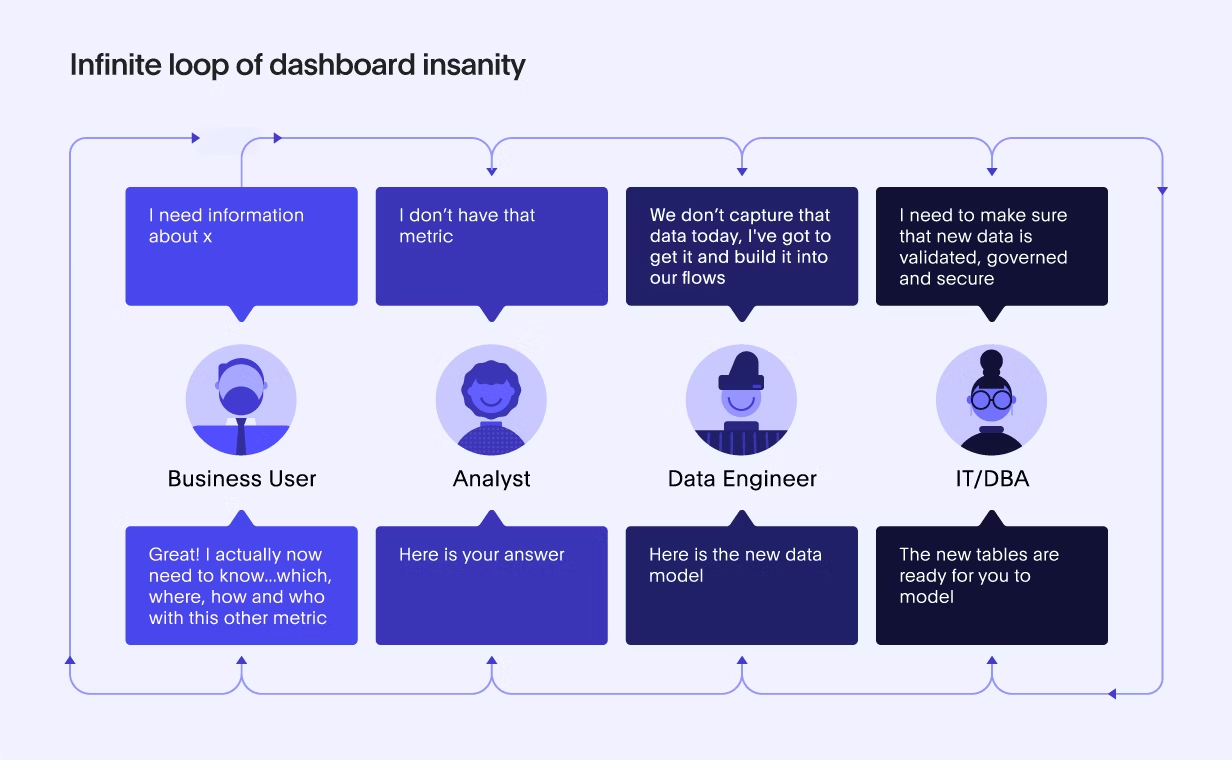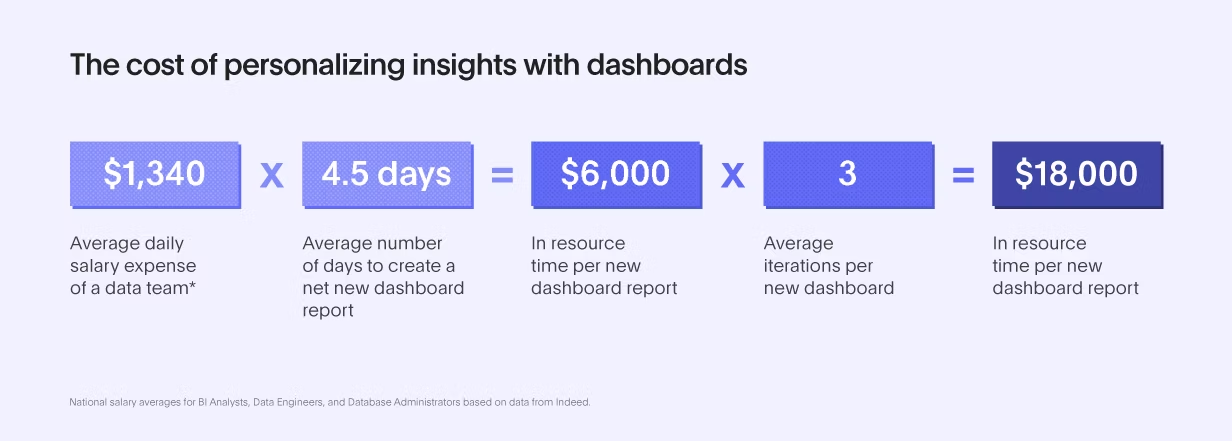Modern data and analytics leaders know that every business user is different. No two marketers or finance managers will use data in exactly the same way because no two share the same contextual view or understanding of the business. Their challenges are as nuanced as they are complex. And they need insights tailored to their specific needs if they are to be successful at solving business problems with data.
Unfortunately, traditional BI tools treat everyone like carbon copies. Dashboards deliver a one-size-fits-all approach to insights and come with a hefty curiosity tax to boot.
The infinite loop of dashboard insanity
As we’ve touched on in previous blogs, whenever business users approach analysts for an insight, they set off a chain reaction. And no matter how well the resulting dashboard may answer the user’s first question, it's the next set of deeper questions that drive real action. It’s not enough to know what happened. Business users must be able to dig in and understand the specifics of when, where, and why. When they can’t, each additional follow-up question demands additional time and resources from your data team. This is where using legacy BI tools start to add up—and not in a good way.


Simply put, dashboards are too rigid, slow, and generic to ever create meaningful value for your business users. In order to thrive in the fast-paced new digital landscape and make smart data-informed decisions, they need tools that empower them to self-serve their own personalized insights.
So if dashboards don’t deliver value, what will?
While dashboards may be unequivocally dead, it’s not all bad news for your business. A new class of modern cloud analytics solutions is here and making it easier than ever to unlock insights trapped in your cloud data. With modern cloud analytics you can:
Automate how your entire organization gathers, integrates, and mobilizes data, regardless of volume or source.
Take advantage of augmented analytics to synthesize new insights and create continuously learning systems.
Transform insights into action and extend capabilities through living, learning experiences.
Simplify deployment, ongoing maintenance, and monitoring of new insights across the organization.








